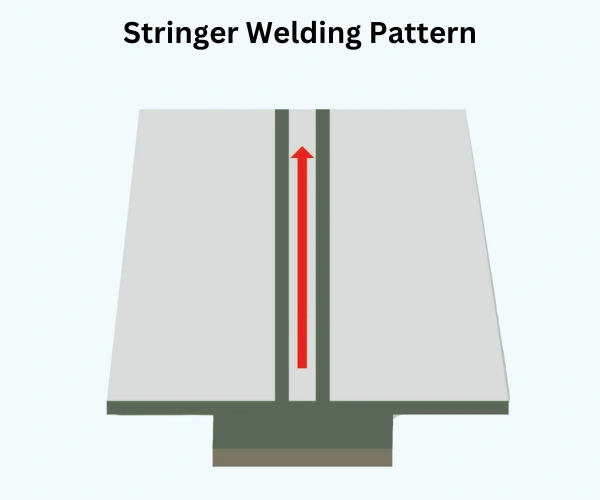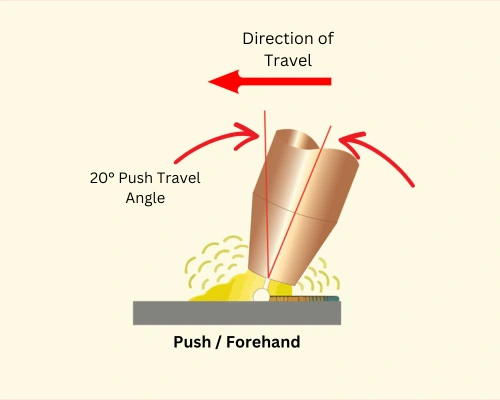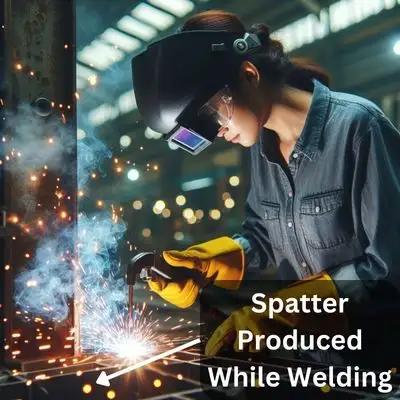What are Welding Beads – Types, Importance and Challenges
Updated: 2 Feb 2024
105
Welding beads are the main structural component of a welded joint. These beads make connections between metal and form a well-designed product. Welding beats are also the building blocks in welding industries. In other words, welding beads connect materials (metal/iron) to form a unique structure for a specific purpose.
Welding beads are made using heat and pressure, turning the metal into a molten pool. This weld pool becomes a strong and tightly joined bond when it cools down. In exploration, we will understand weld beads and their types and the techniques, considerations, and significance that make welding beads a foundation.
Concept of Weld Beads – What is it?
A welding bead is the raised line between the joint or workpieces resulting from melted metals. OR Welding beads are like glue, holding two pieces of metal together.
These beads can be produced with various welding processes such as arc welding, MIG welding, and TIG welding. These beads have different qualities, strengths, and durability in the welding field. So we have some types, which are given below.
Types of Welding Beads:
The following are the essential types that will deeply clarify your idea about weld beads.
1. Stringer Beads:

- Description: A stringer bead is the simplest form of bead, which is a straight line. It is also the standard type of weld bead, which is used to weld metal in one go with any weaving motion.
- Application: Welders use stringer beads in pipeline construction, automotive fabrication, and aerospace manufacturing.
2. Weave Beads:
- Description: Weave beads involve a side-to-side motion during welding. The torch or electrode is moved in a zigzag or weaving pattern. There are many patterns of weave beads; some are given below.
- Application: Weave beads are used to achieve better joint coverage and can effectively fill wide gaps. These patterns are commonly used in filet welds.
3. Overlap Beads:
- Description: An overlap bead is created by depositing additional weld metal over a previously welded area. This can provide extra strength to the joint.
- Application: People use overlap beads when additional strength or thickness is required, such as repairing worn-out parts.
4. Crescent Beads:
- Description: Welding in a crescent or half-moon shape is called a crescent bead. This type of bead is used for a smooth and aesthetic look.
- Application: This welding bead is applicable in pipelines. We can also use it for the gradual buildup of weld metal.
5. Backstep Beads:
- Description: Backstep bead can be understood by its name; back means opposite, so welding in the opposite direction of the progression of the weld joint. This can help you to control the heat and distortion.
- Application: Backstep beads help in situations where minimizing distortion is critical, such as in thin materials.
Welding Techniques for Perfect Beads:
Here are the five techniques you can use in your welding journey for perfect beads.
1. Maintain Consistent Speed:

Whether making a stringer bead or a weave bead, maintaining a consistent welding speed is essential.
Inconsistent speed can lead to rough beads, poor penetration, and weak joints.
2. Controlled Heat Input:
Controlling the heat of a welding machine can improve your weld beat because a supply of improper heat can damage your workpiece.
So, adjust welding parameters such as current and voltage according to your material thickness and need.
3. Proper Electrode Angle:
The angle at which you hold the welding electrode is essential for the shape and quality of the beads.
The most common electrode angles are 45°, 60°, and 90°, but you can use other angles according to your need.
4. Clean Base Metal:
If you want a smooth weld bead, it is essential to have a clean and free-of-contaminants base metal surface.
Before starting welding, use the best cleaning methods, such as wire brushing or grinding.

5. Practice and Experiment:
Like any skill, mastering welding beads requires practice. Set up mock joints and experiment with different techniques to enhance your proficiency.
Importance of Quality Welding Beads:
1. Structural Integrity:
Strong and quality beads have a significant impact on the structural integrity of a design. Quality beads can increase the lifespan of a structure.
2. Durability and Longevity:
High-quality beads can support your product in harsh conditions of stress and strain. These beads can face extreme conditions and increase the lifespan of the product.
3. Aesthetics:
At the industrial level, welders focus on the appearance of a weld bead. A well-made bead gives an aesthetic look to the overall structure of the product.
4. Minimizing Defects:
Proper welding bead formation helps minimize common defects such as incomplete fusion and undercutting. This reduces the chance of structural failures.
Common Challenges and Troubleshooting in Welding Beads:
1. Undercutting:
Undercutting occurs when the weld metal spoils the base metal near the toe of the weld. This can weaken the joint. Controlling the welding parameters and maintaining a steady hand properly is crucial to prevent undercutting.
2. Incomplete Fusion:
This problem occurs when your molten metal does not fuse entirely with base metal. But do not worry; you can solve this problem by adjusting the welding speed and supplying heat.
3. Porosity:
Porosity results in small cavities or bubbles in the weld metal, compromising strength. Avoid porosity by cleaning the base metal, using the right shielding gas (in the case of MIG welding), and checking for proper gas flow.
4. Spatter:

Spatter refers to the tiny bits of molten metal expelled during welding. Spatter itself is not a defect; excessive spattering can lead to a rough finish. Adjusting welding parameters and using anti-spatter compounds can help to reduce spatter.
FAQs:
How do you prevent welding bead defects?
You can prevent welding bead form defects through correct welding parameters. You can also use suitable welding techniques such as proper electrode angle, slow travel speed, and high current to prevent welding bead defects.
How do you test the quality of welding beads?
You can use X-ray, ultrasonic testing, and visual inspection to check the quality of welding beads.
Can different metals have different-colored welding beads?
Due to metals’ unique thermal quality, welding beads’ colors change from metal to metal.
Final Thoughts:
Welding beads is a separate journey that requires knowledge, skill, and hands-on practice. When you combine these requirements in welding beads, you can become the best welder in the future. Remember, non-stop learning will enable you to get high experience in this field.
This is your time to learn and create storage and proper welding beads. If you need more help related to weld beads, you can ask in the comment section or directly contact us. My team will be there to assess you. For more interesting welding knowledge, you can subscribe to us. Thank you for visiting; happy welding! Bye bye.
Please Write Your Comments